Terry rosehip - a beautiful "decoration" for the garden
Ornamental shrubs in garden design are often used rose hip, or a wild rose. And this choice occurs because the plant is unpretentious, and looks bright and at the same time gentle during flowering. There are types of shrubs that are especially suitable for decorating an area.
It is not for nothing that cultivated species of rose hips have found application in decorating a garden plot. They are predominantly stunted and malleable to grow. Their powerful root system allows shrubs to grow in any area of the garden, they do an excellent job of strengthening the slopes from erosion and shedding.
Content:
- Description of the ornamental shrub
- Reproduction and planting of terry rose hips
- Plant care tips
- Types of pruning, preparation for winter
- Diseases and pests of the bush, the fight against them
- Use in landscape design
Description of the ornamental shrub
About fifty species of rose hips grow in Russian gardens, four hundred - in various countries of the world. Shrubs with double buds are especially appreciated by flower growers. Among them, the Agness variety with yellow flowers, Kaiserin des Nordens, is distinguished, in which the bushes are strewn with carmine-red double buds. And Konrad Ferdinand Meyer has white, silvery-pink buds, in the Nova Zembla variety they are soft cream.
Densely double flowers of a spherical shape in a rich pink tone distinguish the Muskosa variety. Interesting shrub Pink Grothendorst. Its flowers with jagged edges like a carnation attract with a pearlescent pink tint, a delicate aroma.
All ornamental shrubs have a height of eighty centimeters to one and a half meters.
Powerful root system plants form many offspring. The shoots of the bush are covered with thorns, both large and small, depending on the variety. On annual erect stems, short branches with fragrant flowers develop next year. The plant blooms in May.
On ornamental bushes, berries with seeds develop small, barely noticeable and of no particular value. Rosehips with bright double flowers of various colors are grown to create an original design of the site.
Reproduction and planting of terry rose hips
There are several ways to reproduce a representative of the Rosaceae family:
- You can plant seeds in the fall or spring directly into the open ground. The fruits are planted to a depth of 2-4 centimeters. When planting in autumn, in October, the soil is sprinkled with sawdust and humus on top. The shoots that appear in the spring are protected from morning frosts, covering them with a film.
- Reproduction by seedlings is more efficient. They are planted in mid-October or early November to a depth of 20 centimeters. The shoots are cut short, leaving a length of ten centimeters. In order for them to take root better, it is necessary to make cuts on the roots, shortening them to fifteen centimeters. Dropped in a muddy clay, the roots are straightened and placed in a hole, covered with nutritious soil.It is imperative to water the plants, and the soil around grind with sawdust or peat.
- In order for the plant to retain its maternal characteristics, it is propagated by root suckers. Harvesting of planting material is carried out in late autumn or early spring. Having chosen an offspring up to twenty to forty centimeters high, it is separated from the mother bush with a sharp shovel. They are planted in a prepared hole so that the root collar is 5-8 centimeters below ground level. You can not separate the offspring from the bush, but take care of it until it gives adventitious roots. After that, the shoot is carefully separated from the maternal roots, transplanting it to a new place.
Terry rose hips are planted in sunny places, where there is no stagnant groundwater. The soil for the plant should be neutral in acidity. Before placing the seedling, rotted manure and humus are added to the pit. From fertilizers, ammonium nitrate (200 grams), potassium salt (30 grams) are suitable.
Since the root system of the bush is powerful and grows rapidly, it is necessary to protect the rosehip with a small ditch twenty centimeters deep. The distance between the bushes should not be less than half a meter. Planting and reproduction of terry rose hips occurs without effort and cost, but do not forget about tight gloves on your hands to avoid injury from thorns.
Plant care tips
Unpretentiousness, vitality rose hips allows him to take root well, grow in the garden. Of the shrub care procedures, the following should be noted:
- The plant is resistant to hot temperatures. If the heat lasts all summer, then the bush is watered three to four times per season. It is enough to pour four buckets of water on one bush.
- From the second year of life, they begin to feed the decorative culture. Nitrogen fertilizers are suitable. They are brought in for the first time in March, as soon as the snow has melted. The second procedure is carried out in the middle of summer, when the shoots are actively developing. The third feeding is carried out in September. Subsequently, fertilizers are applied every three years at least three kilograms compost or humus under a bush. Be sure to loosen the soil around after fertilization, water it, and sprinkle it with a layer of sawdust.
- Weeding of plantings is carried out as weeds overgrow.
- To improve the structure of the soil, a good supply of the root system of the plants with oxygen, the soil around the dog rose is loosened to a depth of ten centimeters.
Terry rosehip care is simple, it is carried out to enhance the decorative properties of the shrub.
Types of pruning, preparation for winter
In order for the shrubs to look neat, to be a real decoration of the territory, they must be cut off. The first time, the branches are removed after planting, leaving three buds on the shoots. As the bush grows, they begin to cut it off so that flower buds are laid faster.
Usually a rose hip, after three years of growth, has many branches shading each other. Thinning by removing excess shoots in order to restore the normal illumination of the flower branches. The shrub is pruned every autumn and spring before bud break, removing broken, dried, diseased branches. Be sure to remove shoots that are more than five years old.
If the work on the formation of the bush, preparation for the winter was carried out on time and correctly, then in the spring the bush will give the scent of lush flowers.
Terry rose hips tolerate winter well, but young seedlings are sensitive to low temperatures. For them, they equip a winding made of covering material or burlap, and sprinkle the soil with straw around it. Before the onset of the cold period, the shoots of the wild rose are cut off, the plant is watered abundantly, fed.
Diseases and pests of shrubs, the fight against them
Rosehip diseases are associated with pathogenic fungi, which actively multiplying, destroy the plant during the wet and hot summer:
- From powdery mildew white bloom appears on the leaves, buds.The plant begins to lag behind in development, shoots do not appear on it, flowers dry up, fall off. Resistance to the disease increases if timely fed with phosphorus-potassium fertilizers.
- The defeat of a rust fungus is determined by spots, brown stripes on the underside of the leaf. Insects are carriers of the disease.
- The sooty fungus is carried by thrips, aphid... From black bloom on the leaves of the rose hips, the processes of photosynthesis and respiration slow down, it begins to weaken.
Save from disease fungicides... Among them, Fundazole is the most effective. They are sprayed for both medicinal and prophylactic purposes. Before the procedure, dissolve one gram of powder in a liter of water. They also use processing Bordeaux liquid, colloidal sulfur.
Of the pests, the danger for the dog rose is the spider mite, rose fly, wild rose fly. If parasites are found, it is necessary to treat the bushes with insecticides such as Confidor... The long-acting drug eliminates aphids, whiteflies, spider mites, and their larvae. From folk remedies, they use tobacco dust, a solution of laundry soap. Timely pruning of shrubs, loosening of the soil will prevent the appearance of diseases, pests on the rosehip.
Use in landscape design
Since the terry rosehip is a hybrid of roses and wild shrubs, it is widely used in landscape design. After all, the shrub is close in beauty to the rose, but unpretentious to the growing conditions. The plant takes root well in any garden area. Most often, bushes are used to create hedge... Luxurious foliage, delicate flowers will become a decorative wall on the border of the suburban areas.
Rosehip is actively used as an introduction to large landscape ensembles, rabatki. Compositions of different varieties of terry rose hips will be a wonderful background for a flower garden. They play the role of the main element in compositions on difficult terrain - rock gardens, rockeries.
Combining with other types of shrubs in mixed plantings, hedges, rose hips are a connector of scattered plants among themselves.
He looks great as a loner on green lawn... Low species of rose hips are grown in tubs, large pots. Sufficient air circulation and bright lighting will be important for them. They look good framed vervains, abelia.
In a landscape garden, rose hips are perfectly combined with plantings. lavender, geraniums, bells... The rustic style of the garden will be complemented by terry shrubs along with phlox, asters... The selection of a rosehip variety for the garden, the choice of a place for it depends on the design style of the site, the taste of the owner.
More information can be found in the video:









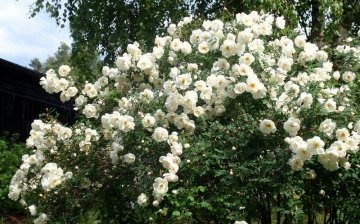








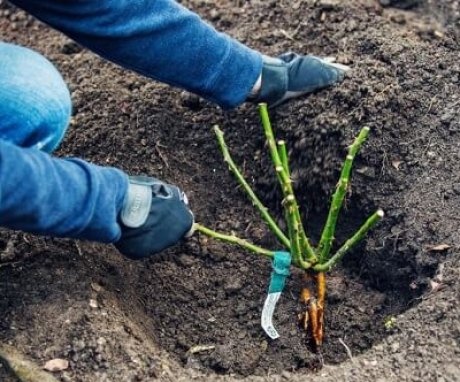

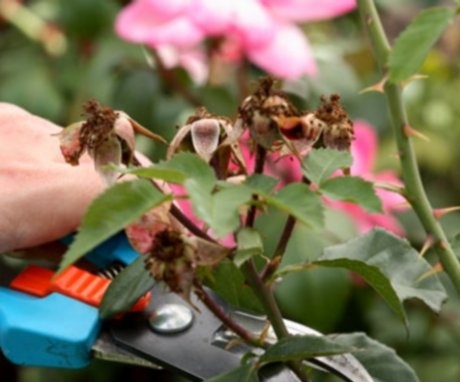
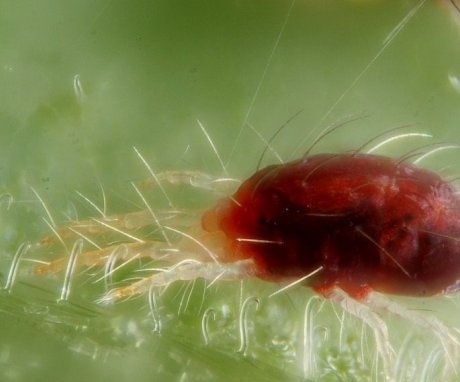
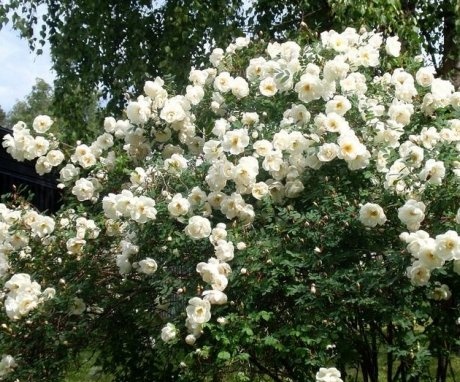
By the way, this variety of rose hips is not only a decoration of the site, but can also serve as a "hedge".
It is enough to carry out correct pruning within two or three seasons, and this rosehip becomes an excellent "fence", both between neighbors and in the case of living partitions into zones, if the plot is large ...